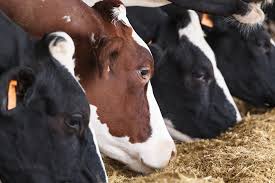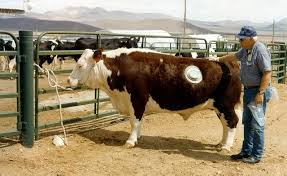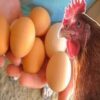Digestibility in animal science is the measure of how much nutrition a feed provides an animal and is absorbed through the intestines into the bloodstream. In other words, it is the difference between the nutrients in the feed offered and those excreted by the animal.
Digestibility provides an important measure of a feed’s nutritional value and quality. Generally, as the quality of ingredients in the feed increases, so does the digestibility and nutrient availability.
In Vivo Digestibility Trials Using Farm Animals
These are trials carried out with live animals to ascertain the extent to which the crude nutrients, as observed from proximate analysis of the feed ingredients, have been digested and/or possibly absorbed by the animal.
Experimental animals used for such trials are usually of the same breed, sex, and approximately the same liveweight to reduce errors in final results.
The test feed material is usually fed for a preliminary period of 10–14 days for ruminants. For non-ruminants, this period is 3 days. This allows the animals to adjust and determine how much of the test material they will voluntarily consume.
After this preliminary period, the animals are transferred to metabolism crates. In these crates, a carefully weighed amount of the test material is offered. This is followed by daily collection of faeces and urine for seven days.
The crates allow for accurate separation of faeces from urine. The faeces collected are weighed and the volume of urine recorded. These are then taken to the laboratory or stored for proximate analysis.
The difference between the proximate composition of the test material and that determined in the wastes collected is assumed to have been digested. However, certain factors like chemical composition of the feed, the efficiency of the animal’s digestive system, and processing methods affect nutrient digestibility.
Read Also: General Management Considerations in Livestock Management
Determination of Digestion Coefficients and Total Digestible Nutrient

From the data generated, the digestion coefficients of the nutrient contents can be calculated. As earlier observed, proximate analysis provides information only on the amount of dry matter, ether extracts (fat), protein, fibre, mineral matter (ash), and nitrogen-free extract present in the feed sample.
It does not indicate how much of the nutrients in the feed have been relatively utilized by the animal. This necessitates the determination of digestion coefficients for individual nutrients.
The digestion coefficient of a nutrient is the average percentage of that nutrient digested from the feed. It is determined by dividing the amount of each nutrient digested by the amount of each nutrient consumed, and then multiplying by 100. The steps involved in this calculation for each nutrient are:
1.Consumed = Kilogram of feed consumed × Percent nutrient in feed
- Excreted = Kilogram of faeces excreted × Percent nutrient in faeces
- Digested = Consumed − Excreted
- Digestion Coefficient = (Digested ÷ Consumed) × 100
Following the calculation of the digestion coefficient, the digestible nutrient is calculated as:
Digestible Nutrient = Percent Nutrient in Feed × Digestion Coefficient
These calculations are done individually for the nutrients, excluding moisture and ash. The Total Digestible Nutrient (TDN) is derived by summing the values of the individual digestible nutrients using the formula:
TDN = Digestible Crude Protein + Digestible Crude Fibre + Digestible Nitrogen-Free Extract + (Digestible Ether Extract × 2.25)
The ether extract fraction is multiplied by 2.25 to compensate for the higher energy value of fat compared to protein and carbohydrates. Digestion coefficients are not calculated for mineral matter (ash) since a large proportion of the minerals present in faeces have been utilized and excreted into the gut.
Read Also: Bird of Paradise Flower (Strelitzia reginae): All You Need To Know About
In Vitro Digestibility Trials For Ruminant Feed Evaluation

In vitro digestibility is an anaerobic fermentation performed in the laboratory to simulate digestion, particularly in the rumen. This method was first described by Tilley and Terry in 1953.
Upon acquiring rumen fluid from fistulated or cannulated animals, a buffer is added to simulate saliva production. This fluid is then mixed with the test feed and placed in an incubator for 24, 30, or 48 hours as required, at room temperature (39°C), where it is digested by acid pepsin. The undigested residue is then discarded.
In vitro trials are fast and accurate in producing multiple data. This method is cost-effective and does not require live animal hosts. However, a major constraint is the availability of a stable power source, especially in developing countries.
A digestibility trial in farm animals is highly relevant in providing insight into the nutritional value of feed materials. Both in vivo and in vitro methods have continued to serve as essential tools in feed evaluation and formulation.
Do you have any questions, suggestions, or contributions? If so, please feel free to use the comment box below to share your thoughts. We also encourage you to kindly share this information with others who might benefit from it. Since we can’t reach everyone at once, we truly appreciate your help in spreading the word. Thank you so much for your support and for sharing!






